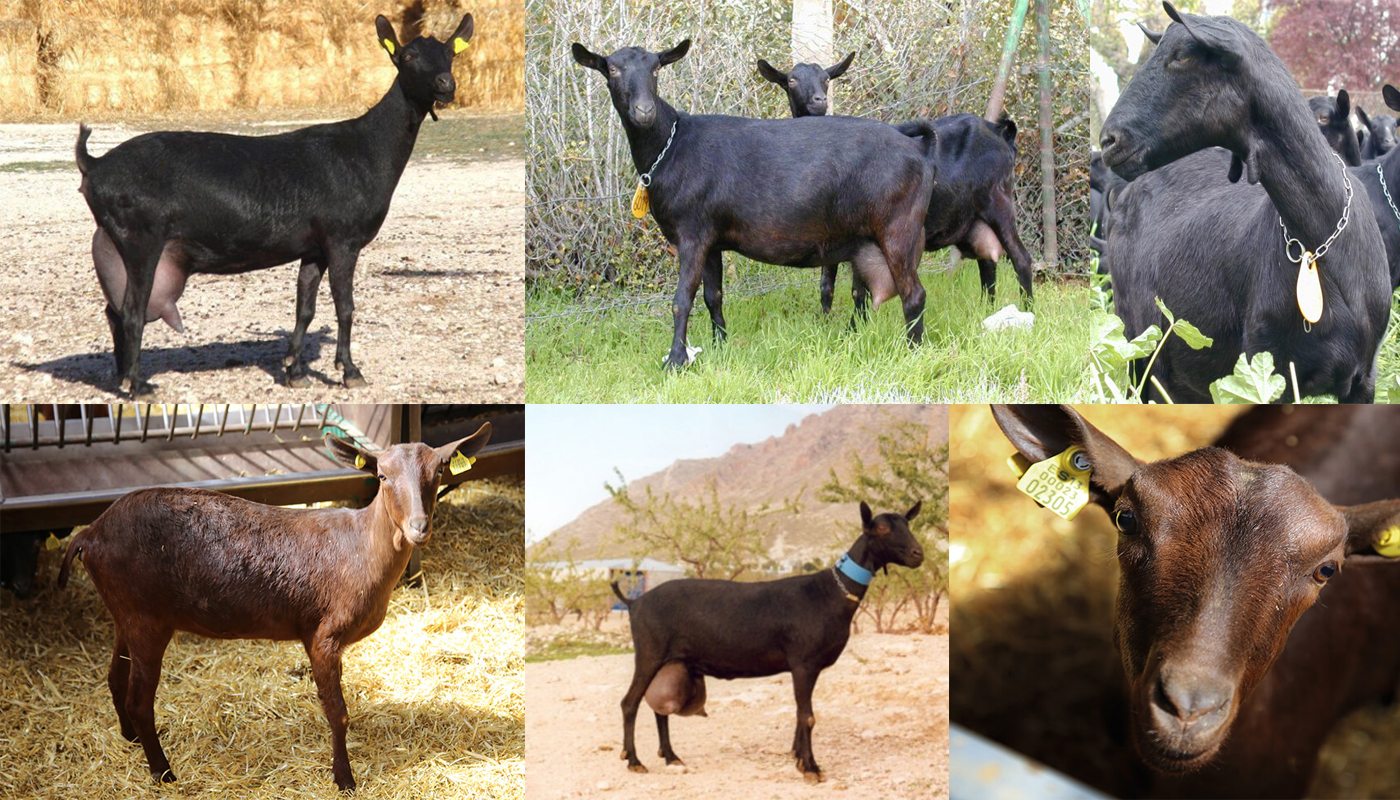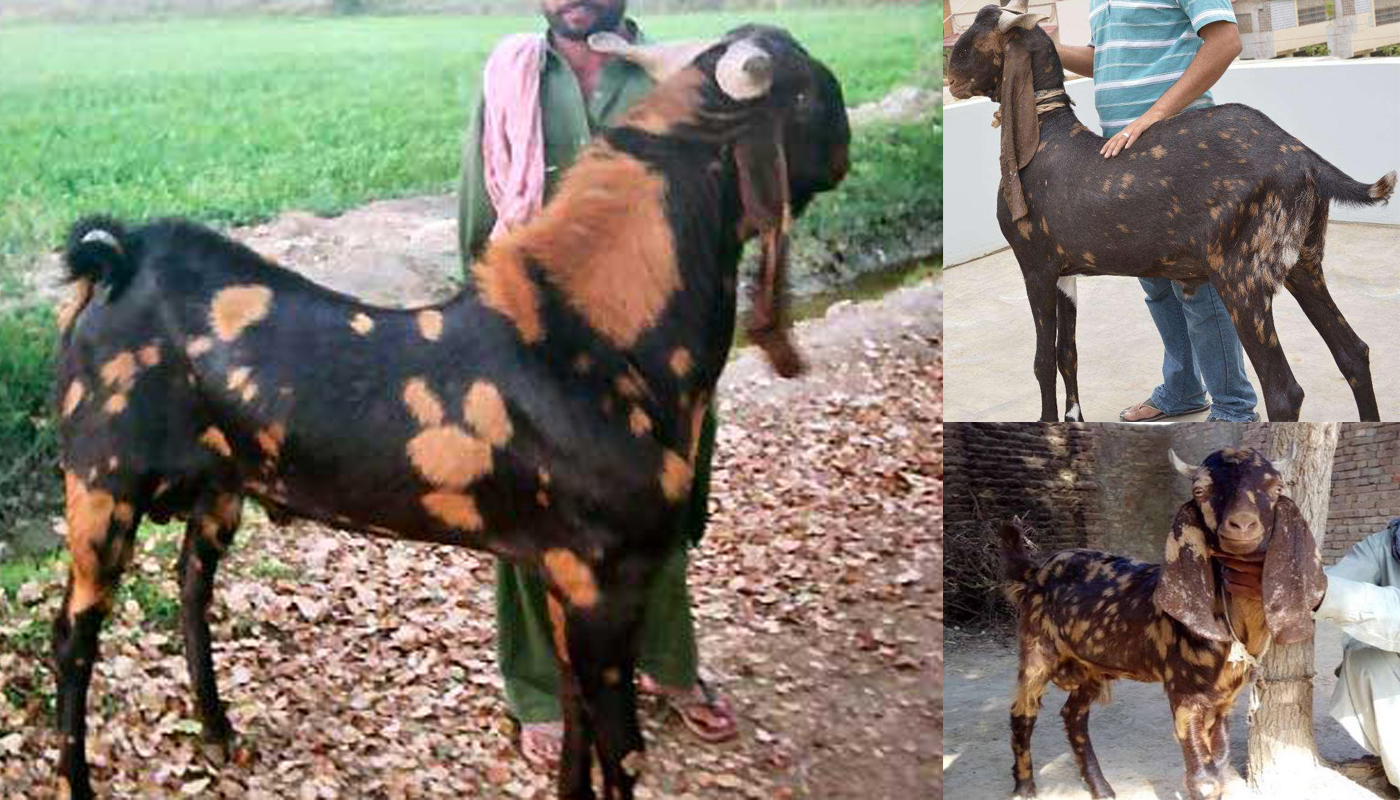
This little goat is the result of crossing Pygmy goats with Angora goat hence it cute name Pygora!
Although they get their fluffy little coats from their Angora ancestry side their beautiful array of coat colors comes from their Pygmy goat ancestors.
This little goat is fun, compact and ever so friendly it makes an exceptionally good family pet that will produce lots of nutritious milk and valuable fibers.
Pygora Goat Quick Profile Overview
| This little Pygmy, Angor cross goat is the proud product of American breeding! | |
| Country of Origin: | America |
| Other Names: | Miniature Angora goat |
| Breed Size: | Small |
| You may Also Like: | Top 12 Large to Largest Goat Breeds |
| You may Also Like: | 11 Smaller and Miniature Goat Breeds |
| Main Purpose: | Fiber and Milk |
| Can be used for | Breeding, Fiber, Milk, Pets |
| You may Also Like: | 10 Best Goat Breeds for Meat Production |
| You may Also Like: | Top 10 Best Dairy Goat Breeds |
| Temperament: | Friendly, spritely and full of fun |
| Good with Kids? | They are great for having around supervised children especially if they do not have horns that can potentially butt and hurt a child. |
| You may Also Like: | 10 Best Goat Breeds to Keep as Pet |
| Ideal Environment: | They are pretty much adaptive to any environment as long as there are healthy lush greens to graze on, lots to do and play on and provides a safe environment from predators. | Ideal Climate: | All climates especially the cooler climates |
| Conservation Status: |
Not Listed by the *ALC Common |
| Health Issues? | No known health issues |
| Good Starter Goat? | Yes, they make an excellent starter goat and can be kept by the Urban Homesteader due to their size |
| Goat Associations: | The Pygora Breeders Association (PBA) |
| Goat Clubs: | Please check with the Pygora Breeders Association for any clubs in or around your areas as there are not listed ones. |
| Note: *ALC stands for American Livestock Conservancy | |
PHYSICAL CHARACTERISTICS
| They are small compact with little head and short legs. They are quite hardy, study and strong for such little goats. | ||
| Color(s): | They come in an array of different colors such as black, brown, white, gray, gray and white or a mix of these colors Both the doe and buck have the same color traits |
|
| Goat⇒ | Doe | buck |
| Breed Weight: | 34 kg’s | 43 kg’s |
| Breed Height: | 18 inches at withers | 23 inches at withers |
| Hair: | Long with variously shaped locks | Long with variously shaped locks |
| Ears: | Tubular and held pointing down and erect from the sides of their head. The ears are the same color as their coats | Tubular and held pointing down and erect from the sides of their head. The ears are the same color as their coats |
| Horns: | They are usually hornless but can have small horns that stick straight up | They are usually hornless but can have small horns that stick straight up |
| Matures at age: | 5 to 15 months | 3 to 15 months |
| Puberty Age: | 4 to 10 months | 4 to 9 months |
| Breeding Age: | 18 months | 1 year |
| Breeding Traits: | 1 Breeding cycle | Cover 20 to 30 does in 1 season |
DOE BREEDING & MILKING INFORMATION
| They are good little breeders that have one litter a year | |
| Breeding Period/cycle: | Usually lasts 12 to 36 hours Ave. 21 days/18 to 24 days |
| Gestation Period: | Usually around 148 to 155 day but most are 150 days |
| Kids: | 1 to 3 |
| Good Mothers? | Yes, they are wonderful mothers |
| Lactation Period: | Usually around 250 to 284 days. Most common is 284 days |
| Milk Quality: | They have good butterfat and protein content. They can produce about 1 to 2 liters a day depending on the goat and time of lactation. |
| Milking Level: | They are quite easy to milk and generally will stand still and steady during milking |
| You may Also Like: | Top 10 Best Dairy Goat Breeds |
GOAT FIBER PRODUCTION INFORMATION
| They are very good little fiber produces and produce three types of fiber. | |
| Fiber Production? | Good |
| Type of Fiber Produced: | Cashmere, mohair and a combination of the two fibers Class A: is a mohair type fiber Class B: is a mix of Class A and Class B fibers sometimes referred to as Cashgora fiber. Class C: is a Cashmere type fiber |
| Age they Produce from: | 1 year |
| Approx. Quantity: | 8 to 16 pounds depending on the size of the coat and the fiber category |
GOOD TO KNOW
| Some useful information and handy advice on the Pygora Goat Breed | |
| Where to buy them: | Hawks Mountain Ranch Pygora Goats, Country Farms and also try the various breed associations listed under the Pygora Goats Profile overview at the beginning of this article or one of the American Goat associations listed under “Useful Links” at the end of this article |
| Agility: | They are really agile and exceptional escape artists that will climb or jump over anything in their way of getting to where they want to go. |
| Interact with other animals: | They are friendly socially little creatures that are curious about all their fellow livestock and poultry. |
GENERAL INFORMATION:
Pygora goats usually give birth to either twins or quadruplets. Their kids weight around 5 pounds at birth and can jump and run within four hours of being born.
The kids are usually weaned by the mother at around 12 weeks and they reach maturity around 8 to 12 months.
The Pygora goat lives to about 12 to 15 years of age and can produce milk and fleece to up to 10 years of age.
HISTORY
The Pygora goat was originally bred in 1980 in Oregon City, Ore. They were developed by Katharine Jorgensen when she was inspired by goats, she saw on the Navajo Indian Reservation with curly haired coats of many different colors.
She already owned a registered Pygmy buck that she thought she would cross with an Angora doe. After purchasing and registering her Angora doe she began her breeding program. Her goal was to produce a goat the was of manageable size and stature that could be used in both the Urban, Homestead and farming areas.
The goat was to be able to produce good fiber and milk as well as be a good pet with a fine temperament.
Her success was the Pygora goat as we know it today. Spritely, fun with a whole range of colors to choose from that produces great multi-color fiber and good milk.
VIDEO
USEFUL LINKS
- American Goat Society(AGS)
- American Goat Federation (AGF)
- American Dairy Goat Association (ADGA)
- American Cashmere Goat Association (ACGA)
- Canadian Meat Goat Association (CMGA)
- Canadian Goat Society (CGS)
- Animal Shelter (ASPCA)
- American Veterinary Medical Association
- American Poultry Association
- American Animal Welfare Society
- American Animal Control
- American Animal Husbandry Society
 Murcia Granada Goat Breed – Everything You Need to Know
Murcia Granada Goat Breed – Everything You Need to Know Kiko Goat Breed – Everything You Need to Know
Kiko Goat Breed – Everything You Need to Know Nigora Goat Breed – Everything You Need to Know
Nigora Goat Breed – Everything You Need to Know Sahelian Goat Breed – Everything You Need to Know
Sahelian Goat Breed – Everything You Need to Know American Lamancha Goat Breed – Everything You Need to Know
American Lamancha Goat Breed – Everything You Need to Know Verata Goat Breed – Everything You Need to Know
Verata Goat Breed – Everything You Need to Know Jonica Goat Breed – Everything You Need to Know
Jonica Goat Breed – Everything You Need to Know Kamori Goat Breed – Everything You Need to Know
Kamori Goat Breed – Everything You Need to Know Goat Health Guide: Understanding Common Issues in Goat Breeds
Goat Health Guide: Understanding Common Issues in Goat Breeds Top 10 Best Dairy Goat Breeds
Top 10 Best Dairy Goat Breeds Nigerian Dwarf Goat Breed – Everything You Need to Know
Nigerian Dwarf Goat Breed – Everything You Need to Know Fainting Goat Breed – Everything You Need to Know
Fainting Goat Breed – Everything You Need to Know